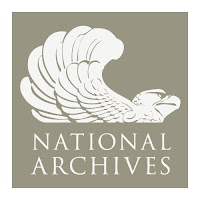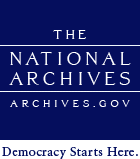The National Archives and Records Administration has announced a fall 2012 opening of the new location for the National Archives at New York City—the Alexander Hamilton U.S. Custom House at One Bowling Green in Lower Manhattan.
“This exciting new venture will bring the records of American history to life through exhibitions, educational and research opportunities, an expanded research room, and public programs for hundreds of thousands of new visitors each year. We are thrilled to bring the National Archives to New York City – a location close to my heart” said Archivist of the United States David S. Ferriero, who formerly served as Director of the New York Public Libraries.
The National Archives’ New York research facility was on Varick Street in Greenwich Village for 20 years. The new location at the Alexander Hamilton U.S.Custom House will provide greater visibility and accessibility to the important Federal records originating in New York, New Jersey, Puerto Rico, and the U.S. Virgin Islands. It will allow the Archives to expand its research functions in New York and create a new educational destination in a building that already welcomes museum visitors through the Smithsonian’s National Museum of the American Indian. The new educational spaces and exhibitions are made possible by a public-private partnership between the National Archives and the Foundation for the National Archives.
Components of the National Archives at New York City, all free and open to the public, will include:
A Welcome Center to introduce visitors to the National Archives and the depth and diversity of Federal records. The Center will feature a small exhibition gallery with a changing selection of original documents from the National Archives, in addition to an opening exhibition in the grand rotunda of the Alexander Hamilton U.S.Custom House.
A Research Center for scholars, genealogists, and the general public to conduct their own research using original records and microfilm holdings with the assistance of professional archivists. Researchers will have free access to resources including online subscription services such as Ancestry, Fold3, Heritage Quest, and ProQuest.
A Learning Center to welcome school groups and families and to encourage them to explore National Archives records through workshops, school programs, online access, “Archival Adventures,” and more.
Exhibitions in the Alexander Hamilton U.S.Custom House Rotunda featuring holdings from the Archives. The opening exhibition, “The World’s Port: Through Documents of the National Archives,” opens September 21, 2012, and runs through November 25, 2012.
Public Programs in the Welcome, Research and Learning Centers and in the Alexander Hamilton U.S.Custom House’s 300-seat theater and lecture halls to highlight the nation’s history and New York’s special role in shaping the nation. Outreach programs will increase awareness of National Archives resources in New York and nationwide.
The National Archives and Records Administration is an independent Federal agency that serves American democracy by safeguarding and preserving the records of our Government, ensuring that the people can discover, use, and learn from this documentary heritage. The National Archives ensures continuing access to the essential documentation of the rights of American citizens and the actions of their government. From the Declaration of Independence to accounts of ordinary Americans, the holdings of the National Archives directly touch the lives of millions of people. The agency supports democracy, promote civic education, and facilitate historical understanding of our national experience. The National Archives carries out its mission through a nationwide network of archives, records centers, and Presidential Libraries, and on the Internet at www.archives.gov.
The Foundation for the National Archives is an independent nonprofit that serves as the National Archives’ private-sector partner in the creation of and ongoing support of the National Archives Experience, which includes permanent exhibits, educational programs, traveling exhibits, special events and film screenings, and historical/records-related products, publications, and media. The Foundation helps the public understand the importance of the holdings of the National Archives by presenting the depth and diversity of the records through award-winning, interactive educational exhibits and programs. It generates financial and creative support for the National Archives Experience from individuals, foundations, and corporations who share a belief in the importance of innovative civics education. In addition, the Foundation has taken the Archives nationwide through online initiatives such as the Digital Vaults online exhibit and DocsTeach, a web-based educational resource. These components make the rich resources of the National Archives accessible to Americans nationwide.
The Alexander Hamilton U.S. Custom House, completed by architect Cass Gilbert in 1907, is a magnificent Beaux-Arts style building located at the junction of the Wall Street Financial District and the Battery Park tourism district. Its exterior and interior are decorated with carvings, murals and sculpture, including work by Daniel Chester French, Louis Tiffany, and Louis St. Gaudens. The site itself is historically significant, from its origins as the location of Fort Amsterdam, the nucleus of what would become New York City. The National Archives at New York City will occupy space on the 3rd and 4th floor of the Custom House. The rotunda, auditorium and lecture halls are shared spaces.






